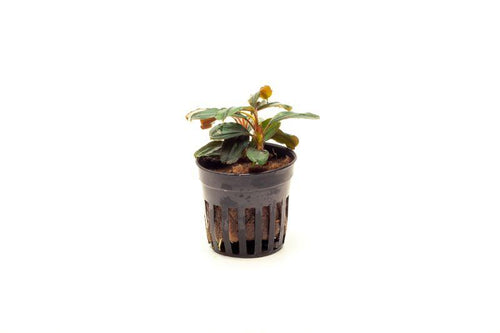

Bucephalandra Theia Pot
- $ 19.99
- $ 19.99
Common Name: Bucephalandra Theia
Bucephalandra Theia is known for soft, broad leaves that have a dark olive to reddish-brown coloration.
It's highly prized for its pronounced iridescent coloration with appropriate care and when placed under aquarium LED lighting.
As an epiphytic plant, Bucephalandra generates new growth from its rhizome. It is a slow-grower and can be grown submerged or emersed. Optimal results are achieved for Bucephalandra in low to medium lighting conditions, fostering dense growth when provided with proper water conditions. CO2 injection, adequate water flow, and consistent tank upkeep can result in faster and more robust plant growth. When planting, don't cover the stem and rhizome to prevent plant decay and deterioration. While its care is the same as other popular aquatic species like Anubias and Java Ferns, Bucephalandra is less tolerant of abrupt parameter changes.
Notes:
- Bucephalandra is an epiphytic aquarium plant so it can be attached to aquarium hardscape.
- Do not plant Bucephalandra in substrate and cover the rhizome. This will cause it to melt and rot.
- Bucephalandra’s final size, coloration and growth rate are dependent upon the condition of the aquarium Photos are a representation of what you will receive and may vary.
- Do not make drastic changes to the aquarium. Unstable parameters will result in melt and rotting of the aquarium plant.
- Please be sure to remove this plant from its pot. Remove the cotton surrounding the roots and plant into a quality substrate. For instructions on how to properly prep "potted" aquarium plants, click here .
- CO2 injection will yield better growth.
- Please research appropriately to ensure your plant thrives.
Care & Additional Information
Listed information should be treated as general guidelines only. We encourage you to do thorough research before keeping any type of livestock.
Family Name:
Araceae
Origin:
Borneo
pH:
6-7.5
Skill Level:
Easy
Light:
Low to Medium
Co2:
Not necessary but recommended
Propagation:
Cut by rhizome
Growth rate:
Slow
-
Tweet -
Pin it